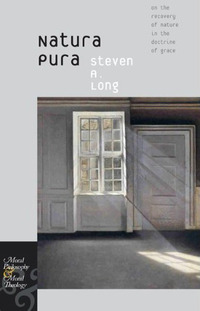Readers may be interested in the article “40 Cases of Plagiarism” appearing in Bulletin de Philosophie Médiévale 51/2009 (Turnhout: Brepols, 2010), pp. 350-391, compiled by Pernille Harsting, Russell L. Friedman, and me. It presents evidence of plagiarism in a number of publications under the name of Martin W. F. Stone on mainly medieval and Renaissance philosophy.
That Martin W. F. Stone succeeded in publishing the words and research results of Fernand van Steenberghen, Ralph McInerny, Carlos Bazán, John Wippel, and Lawrence Feingold (among others) as his own, in academic journals and in books with reputable publishing houses, must surely cause scholars to take note. Arguably, the situation is especially pressing for Thomists; nine of Stone’s plagiarized pieces are currently listed in the Bibliographia Thomistica, and one piece is listed in Thomistica 2006: An International Yearbook of Thomistic Bibliography. The editor of the Bulletin de Philosophie Médiévale, Kent Emery, Jr., highlights the relationship of Stone’s work to Thomistic scholarship in an editorial in the same issue of the Bulletin, observing:
Or how was it possible that the scrivener hugely plagiarized the essay of an eminent Thomist published in a volume bringing together “Thomistic doctrines and modern perspectives,” and then published his workmanship in a volume bringing together “Thomistic and Analytical Traditions,” edited by another eminent Thomist and crammed full of essays by yet other eminent Thomists (see Case 14, pp. 367-68)? One thing is clear: Eminent Thomists do not necessarily read the essays of other eminent Thomists, which, if they had, they might have been able to detect that someone was ripping-off another person’s essay. (p. xii)
Elsewhere, Emery argues forcefully that the situation demands reflection among members of the scholarly community:
That there are those who commit acts of plagiarism is one thing; that such acts can be repeated successfully, without detection, in 40 articles, over a period of at least 11 years, in the pages of the most “prestigious” journals and at the most “prestigious” presses, is quite another thing altogether, which exposes some pathology in the contemporary body academic that cries out for diagnosis (p. 348)
So far, retractions have been issued by:
Discussion and news reports on the issue include here, and here.
Allow me to repeat two requests made in the introduction to “40 Cases of Plagiarism.” First, as the great majority of Stone’s pieces examined in the article have not, at present, been retracted by the editors and publishers of these pieces, we encourage the many authors, editors, and publishers whose legal copyright and intellectual property rights have been infringed, to seek retractions of all the pieces plagiarizing their original work. Secondly, we caution that the evidence published in the Bulletin article is not exhaustive, and urge other readers to supplement our findings.


